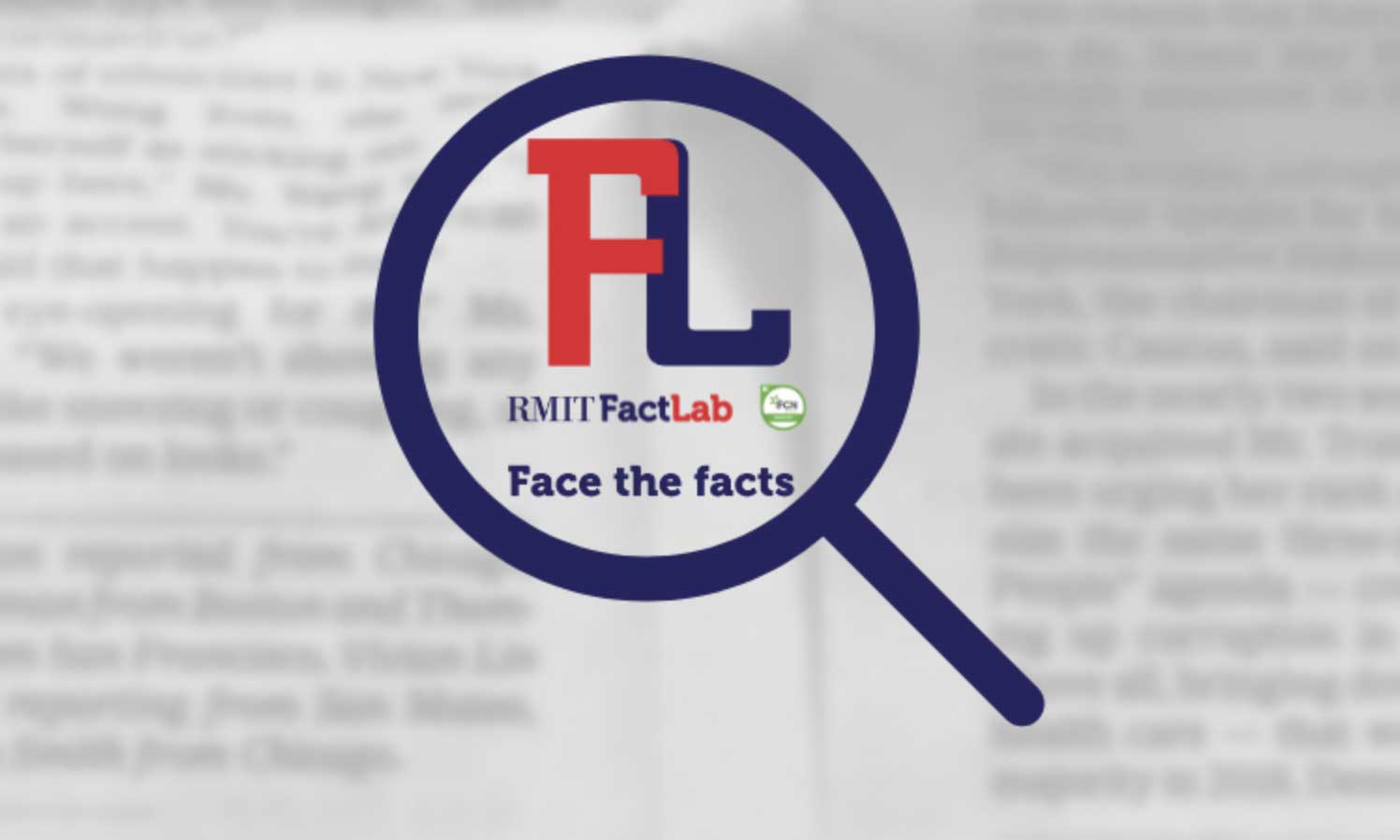Electric vehicles
Fact Check recently looked into a similar claim made by Prime Minister Scott Morrison, who said electric vehicles would not be able to tow a boat or caravan or make it to remote areas, such as camping grounds.
Given most electric vehicle models available in Australia could reach, on average, up to 300 to 400 kilometres on a single charge, and a number have towing power, Fact Check found the Prime Ministers' claim to be in need of a tune up.
There is a wide range of electric vehicles currently on the market in Australia, with numerous new models under development by world car makers.
Transport engineer Dr Jake Whitehead, of the University of Queensland, told Fact Check that the key difference between electric vehicles right now was "whether they're Tesla or not a Tesla".
In assessing Mr Conroy's claim, Fact Check considers the Tesla Model S and Hyundai Kona EV to be sound examples of current electric vehicle technology.
The Tesla Model S (standard range) can travel up to 490 kilometres on a single charge; a higher-priced model offers a range up to 660 kilometres. The Hyundai Kona EV can reach up to 449 kilometres.
Both vehicles fall at different ends of the affordability spectrum. The market price for a standard range Tesla Model S is around $108,000, whereas the starting price of a Hyundai Kona is nearer $60,000.
Electric vehicle charging technology
There are different categories of charging efficiency for electric vehicles, according to their size and make.
Much like fossil-fuelled cars, which rely on different grades of petrol and diesel according to engine type, a variety of chargers and charging plugs are used by electric vehicles.
'Level 1' and 'level 2' chargers rely on alternating current (AC) and are referred to as "destination" stations because of their slow release of electricity, in which it can take four hours or more to fully charge a battery, making them better suited for deployment in shopping centres or motels, where drivers can shop or spend the night.
Meanwhile, direct current (DC) charging (or 'level 3') enables faster charging and less overall time.
The best example of high-powered stations are Tesla's supercharger network.
Ultra-rapid chargers such as these are better suited for long-distance travel, as they can recharge a battery to 80 per cent of its capacity in around 30 minutes.
Gail Broadbent, post-graduate researcher in electric vehicles at the University of NSW, said: "For a long trip, you would probably want to use high-speed rechargers so you can get going as quickly as possible.
"If you're going to Bondi Beach, or a Westfield shopping centre, that is suitable for destination charging because you are usually going to be there for a couple of hours."
Similarly, for non-Tesla vehicles like the Hyundai Kona, fast-charging stations can typically achieve 70 kilometres of range for every 10 minutes of charge, or around 420 kilometres in an hour.
According to the Electric Vehicle Council, some ultra-rapid chargers currently being rolled out are estimated to inject 300 kilometres of range in 10 minutes.
Dr Whitehead, who is also a special advisor in mobility policy, told Fact Check that calculating the number of kilometres in so many minutes was done by paying attention to how many kilowatts a charger could generate
"If you have a 50-kilowatt charger, which the vast majority of chargers are, you get about 50 kilometres in 10 minutes.
"If it's 100 kilowatts, it's 100 kilometres in 10 minutes."
However, "like with your computer or phone, the closer it gets to 100 per cent of charge, the more it slows down.
"The charging rate for the last 10 per cent is much lower, and the same applies to electric vehicles with charging dropping to the equivalent of 25 - 50 kilometres per hour to reach 100 per cent without damaging the battery."
In addition, the length of time required to charge an electric vehicle is dependent upon the amount of power available from the outlet; meaning, the less power available, the longer the charging will take.
Secondly...
Experts told Fact Check that because of a lack of government-endorsed standards, electric vehicle manufacturers were opting for different plug types for their models, similar to how mobile phone technology has variable charging plug compatibility.
So, instead of a standard connector across all models, cars sold in Australia have a mixture of charging inlets.
Ms Broadbent, a former transport policy advisor said: "Because the Australian Government has not set a standard for plug shape, there is a bit of a mismatch among car brands, especially for the older models."
For rapid DC charging, there are two variations.
Japanese manufacturers Mitsubishi, Nissan and Toyota prefer what's called the CHAdeMO for their electric vehicle charging plugs.
Most Europe-based manufacturers, such as Volkswagen, BMW, Ford and Hyundai, use a combined charging system, or CCS.
Dr Whitehead said: "Most of the stations that are listed on Plugshare [a community-led electric vehicle mapping platform] have charging options for CCS/SAE and CHAdeMO."
From Sydney to Melbourne
Google Maps plots the Sydney to Melbourne route according to the available data on official speed limits, recommended speeds, likely speeds and real-time traffic information. When Fact Check consulted Google, the estimated total travel time (without breaks) for the 871-kilometre journey was nine hours and 22 minutes.
Current technology doesn't allow for an electric vehicle to travel between Sydney and Melbourne without more than one stop, with recharging infrastructure making the trip easiest when taken on major roads, such as the M31 (Hume Highway).
There are four Tesla supercharger stations along this route. Tesla produces its own mapping technology to outline the number of charging stops and time needed for its models, as well as for pinpointing the location of each supercharger.
According to the mapping, the trip in a standard range Model S would take 11 hours. This includes four stops, totalling two hours and five minutes of charging time, with the longest charging stop requiring 40 minutes.
Four types of high-speed chargers located along the route service non-Tesla vehicles. They are operated by the National Roads and Motorists' Association (NRMA), Chargefox and Chargepoint, and offer both CHAdeMO and CCS/SEC plug types.
However, unlike the infrastructure supporting Tesla, these are not yet located within distances suited to the Hyundai Kona's range, thereby requiring longer stops at more readily available slower-charging stations.
Ms Broadbent, of the University of NSW, said that although there weren't a lot of high-speed charging stations currently available, "there are enough to travel along most major highways in Australia and be able to recharge in a reasonable time".
"If you own a Tesla, it's very easy as they locate their recharge stations at the correct distance apart to suit their cars. For other brands, you [would] need to use publicly accessible ones."
According to Plugshare's mapping of public fast-charging stations on the Sydney to Melbourne route, the distance between the first at Mittagong, NSW, to the second at Barnawartha North, Victoria, is 462 kilometres. Google Maps puts this at 463 kilometres.
This exceeds the Hyundai Kona's estimated range of 449 kilometres on a single charge.
This would mean the driver of a Kona would either have to utilise one of the many slower-charging public stations along the way -- for instance, at Goulburn or Mickleham -- or make a detour to access a regional fast-charging station.
Beyond Mittagong, this would mean travelling to Canberra, taking one hour and 52 minutes to cover 174km. Replenishing the battery could take around 30 to 40 minutes of charge time.
The driver would then be able to travel 359 kilometres to the next fast-charging station on the Hume Highway at Barnawartha North.
From there, the distance between fast chargers closes and doesn't exceed 150 kilometres.
Alternatively, drivers could travel directly to Canberra from Sydney to "top up" their battery with the fast charger.
It would take around 3 hours and 24 minutes to cover the 283 kilometres to Canberra where charging would take between 30 and 50 minutes.
Associate Professor of Industrial and Applied Mathematics Peter Pudney, of the University of South Australia, said there were ample chargers between Sydney and Melbourne that would support both CHAdeMO and CCS inlets.
"You can certainly choose a route that will get you there and it might be a slightly longer route and you'll be waiting for half-an-hour at each new charge station instead of five minutes at a petrol station," he said.
Dr Whitehead said making the trip was "easier in a Tesla because they have much more established charging networks".
"But [a Sydney to Melbourne trip] is certainly possible in other electric vehicles."
Depending on the decided route, "in total, to do the whole trip [in a Hyundai Kona EV], you would probably need around an hour and 10 to 20 minutes of rest time … to do the whole distance".
"That is, in part, a restriction on the infrastructure more so than the car.
"A lot of [chargers] are 50kW chargers, whereas the Tesla chargers are all 120 kW — so [Tesla's] are more than twice the speed and obviously … charge quicker," he said.
But what's an 'easy' journey?
Victoria's Transport Accident Commission (TAC) offers advice to drivers on how best to avoid driver fatigue.
This includes taking "regular breaks — at least every two hours", having "a 15-minute power nap" when feeling drowsy, and limiting daily driving time to no more than "eight to 10 hours a day".
In addition, VicRoads outlines how taking regular breaks from driving "help reduce the effects of fatigue."
TAC spokesman Nicolas McGay told Fact Check: "Wherever possible, it is important that we plan ahead and get a good night's sleep. If we're already on the road, or our sleep has been poor, then a 15-minute power nap is a good way of helping to get home safely."
"It is recommended that drivers stop at least every two hours to rest, have a stretch and change drivers if possible."
Similarly, the National Heavy Vehicle Regulator (NHVR) requires stationary rest time for professional drivers (spent outside their vehicle).
Those travelling up to 7.5 hours must ensure rest time of 30 minutes, taken in blocks of 15 continuous minutes.
Workers driving a maximum of 10 hours — the time it takes roughly to travel drive between Sydney and Melbourne — must take 60 minutes of rest time in blocks of 15 continuous minutes.
Furthermore... (what the experts say)
Just as you need to stop and refill a fossil-fuelled car on a trip between Sydney and Melbourne, drivers of electric vehicles must stop to recharge their cars.
"More frequent stops and longer charging times mean that the trip will take longer [for most EVs] than in a fossil-fuelled car," Professor Pudney acknowledged.
Dr Whitehead added: "People often talk about these long-distance trips and they make this assumption that they only want to stop once and drive for five hours without resting. In reality, we shouldn't be encouraging that behaviour as it is unsafe and proven to increase the likelihood of road accidents."
Professor Pudney said "people don't buy an electric vehicle because they want to drive from Sydney to Melbourne. You buy an electric vehicle because you want to be able to drive around town without emissions.
"You can argue about whether it's easy or not and some people will and others [might] think the additional hour and a half [spent] charging is too inconvenient.
"But if you're in a hurry — get on an airplane."
Principal researcher: Natasha Grivas
For full story, please visit the RMIT ABC FactCheck website.






